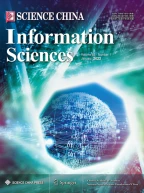Abstract
The primary objective of the spaceborne interferometric synthetic aperture radar (InSAR) system is to develop a consistent global digital elevation model (DEM). The improvement of the processing speed in global interferometry missions while maintaining the accuracy is becoming an important issue. DEM reconstruction is the most time-consuming step in the data processing required for spaceborne InSAR. Based on a DEM reconstruction principle analysis, we exploited two basic characteristics of the mapping relation between the interferometric phase and 3-D position of target point. First, the relation between the 3-D position of the target point and the interferometric phase can be approximated using polynomials. Second, the corresponding polynomials change slowly in the local SAR images. Also, we verified the foundations of the two mentioned characteristics theoretically. Then, we proposed a fast method of DEM reconstruction based on this analysis. Detailed descriptions of the step and key parameters of the fast algorithm are provided. Finally, the repeat-pass interferometric data obtained using TerraSAR-X was used to test the presented method. The experimental results showed that a significant reduction in computation time is achieved with only a small loss in accuracy. The effectiveness and correctness of the proposed method were also validated.
Similar content being viewed by others
References
Krieger G, Moreira A, Fiedler H, et al. TanDEM-X: a satellite formation for high-resolution SAR interferometry. IEEE Trans Geosci Remote, 2007, 45: 3317–3341
Krieger G, Zink M, Fiedler H, et al. The tandem-X mission: overview and status. In: IEEE Radar Conference. New York: IEEE, 2009. 372–376
Farr T G, Hensley S, Rodriguez E, et al. The shuttle radar topography mission. In: Ceos SAR Workshop. Montana: Institute of Electrical and Electronics Engineers Computer Society, 2000. 361–363
Rodriguez E, Martin M J. Theory and design of interferometric synthetic aperture radar. IEE P, 1992, 139: 147–159
Goblirsch W. The exact solution of imaging equations for crosstrack interferometers. In: Proceedings of the IEEE International Geoscience and Remote Sensing Symposium. Singapore: IEEE, 1997. 439–441
Xiang Z, Wang K Z, Liu X Z. A new DEM reconstruction method based on an accurate flattening algorithm in interferometric SAR. In: IEEE International Conference on Acoustics, Speech and Signal Processing, ICASSP. Las Vegas: IEEE, 2008. 1093–1096
Sansosti E. A simple and exact solution for the interferometric and stereo SAR Geolocation problem. IEEE Trans Geosci Remote, 2004, 42: 1625–1634
Chen P H, Dowman I J. A weighted least squares solution for space intersection of spaceborne stereo SAR data. IEEE Trans Geosci Remote, 2001, 39: 233–240
Nico G. Exact closed-form geolocation for SAR interferometry. IEEE Trans Geosci Remote, 2002, 40: 220–222
Ferreti A, Prati C, Rocca F. Multibaseline InSAR DEM reconstruction: the wavelet approach. IEEE Trans Geosci Remote, 1999, 37: 705–715
Parizzi A, Perissin D, Prati C. Accurate DEM reconstruction from permanent scatterers and multi-baseline interferometry. In: IEEE International Geoscience and Remote Sensing Symposium. Denver: IEEE, 2006. 157–160
Ferraiuolo G, Meglio F, Pascazio V, et al. DEM reconstruction accuracy in multichannel SAR interferometry. IEEE Trans Geosci Remote, 2009, 47: 191–201
Eineder M, Krieger G. Interferometric digital elevation model reconstruction - experiences from SRTM and multi channel approaches for future missions. In: IEEE International Geoscience and Remote Sensing Symposium. Seoul: IEEE, 2005. 2664–2667
Lanari R, Fornaro G, Riccio D, et al. Generation of digital elevation models by using SIR-C/X-SAR multifrequency two-pass interferometry: the Etna case study. IEEE Trans Geosci Remote, 1996, 34: 1097–1114
Schwabisch M. A fast and efficient technique for SAR interferogram geocoding. In: Proceedings of the IEEE International Geoscience and Remote Sensing Symposium. Seattle: IEEE, 1998. 1100–1102
Schwabisch M. Die SAR-Interferometrie zur Erzeugung digitaler Gelandemodelle. DLR Technical Report, 1995
Liao M S, Wang T, Lu L J, et al. Reconstruction of DEMs from ERS-1/2 tandem data in mountainous area facilitated by SRTM data. IEEE Trans Geosci Remote, 2007, 45: 2325–2335
Eineder M, Adam N. A maximum-likelihood estimator to simultaneously unwrap, geocode, and fuse SAR interferograms from different viewing geometries into one digital elevation model. IEEE Trans Geosci Remote, 2005, 43: 24–36
Wang M, Liang D N, Yu A X, et al. SBRAS: an advanced simulator of spaceborne radar. In: Proceedings of the IEEE International Geoscience and Remote Sensing Symposium. Barcelona: IEEE, 2007. 695–697
Mora O, Agusti O, Bara M, et al. Direct geocoding for generation of precise wide-area elevation models with ERS SAR data. In: European Space Agency Special Publication. Liege: European Space Agency, 2000. 449–455
Author information
Authors and Affiliations
Corresponding author
Rights and permissions
About this article
Cite this article
Wang, Q., Huang, H., Dong, Z. et al. High-precision, fast DEM reconstruction method for spaceborne InSAR. Sci. China Inf. Sci. 54, 2400–2410 (2011). https://doi.org/10.1007/s11432-011-4375-8
Received:
Accepted:
Published:
Issue Date:
DOI: https://doi.org/10.1007/s11432-011-4375-8
